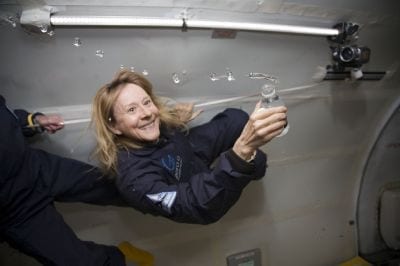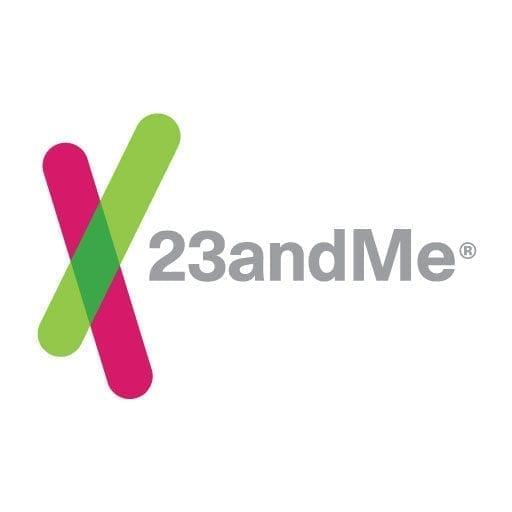
Esther Dyson is a Director of 23andMe and an investor in numerous Internet, private aviation, space and health care ventures. She has also shared her genetic data, medical records and other personal information with the research community and the general public as a research subject for the Personal Genome Project, an initiative led by Harvard’s George Church that aims to make personal genome sequencing more affordable, accessible and useful for humankind.
The Blog talked with Esther to get some of her thoughts on the value and future of personal genomics.
You’ve received information about your genetics from both 23andMe and the Personal Genome Project. How do these two experiences compare?
There was no “news” from either service. Based on current knowledge, there’s nothing in my genes that I need to be particularly worried about.
There was a difference in how I got my genetic information from PGP versus 23andMe. PGP gives you a single report, and you sit down with a scientist who explains anything out of the ordinary, but that’s it.
But with 23andMe, the website lets me go back again and again to learn–both about myself and about genomics in general. Also, I can look at the data for my close relatives [who have also joined] and see what’s in their genomes and how they compare to me. If something new comes out, chances are that I can go to 23andMe and see if there is something relevant in my own DNA or my family’s. The value isn’t just in the genome; it’s in the explanation of the genome.
So 23andMe gives you the tools to really get to know your genes. Why is that important?
I’m a big fan of knowledge, in particular and in general. The more you know about your body and your genome, and about how what you do interacts with your genome, the better off you are. Of course, the same applies to knowing more about the people you care about–with their consent! It’s always better to understand more about yourself and how you work.
As for the meaning–the value–there’s still a lot of research to be done by scientists. Yet at first, those research results aren’t accessible. The real value to individuals is going to be in applying research findings to their own genomes in order to get something meaningful.
Like a bank filled with money, your genome is full of value. But without a way to get at that value, it’s worthless to the individual. 23andMe fits into the picture in two ways. It’s like the ATM that gives you access to the wealth locked within your genes. But it’s also like a financial tool that helps you analyze that wealth: What is fixed and what is risky, for example?
Do you think there is a broader role for 23andMe than just telling people about their genetics?
23andMe’s website also has information about diseases and risk factors. Even if I’m not at increased risk for something, I’m still at some risk for almost every condition. 23andMe helps you get more educated about your body. It helps you understand that a lot of what happens is due to your genes and also to what you do with them through your behavior. Once you know how genes work, you realize you need to consider other factors as well.
I’m a big believer in the “quantified self” movement, in which people quantify or measure themselves–genes, weight, pulse, blood sugar, blood pressure and more. You can now monitor your physical activity and your sleeping patterns. All these metrics both reflect and interact with your genes.
The more you pay attention to your body, the better you’re likely to treat it. Exploring 23andMe implicitly encourages you to consider other things, like how you should be exercising, or not smoking, or what drug interactions might be an issue for you. Once you understand your genes you realize how much there is to understand about everything else as well.
You alluded to the ability to share and compare genomes. What have you found?

I’m one of those lucky people with a large family, most of whom have gotten their 23andMe data: 26 people so far–including a pair of identical twins, half-siblings and whole siblings, and other neat combinations. It’s endlessly fascinating to see which sisters are most alike, which grandchildren take after which grandparents–and to see that reflected in the data. You can also see which relatives match on particular traits, such as circadian rhythm or pigmentation.
23andMe just released Relative Finder, a tool that allows you to find relatives you never knew you had. What do you think so far?
I think Relative Finder is way cool and will be really interesting. The science behind it is similar to techniques used to detect plagiarism. Everyone’s genome is made up of the same basic ”letters”–A, C, T and G. Small sequences of these letters are common between lots of people. Likewise, in literature, phrases such as “and then she said” occur again and again and are useless in distinguishing one novel from another. But when you find whole paragraphs that match, then you figure the two segments must have a common source. Same thing with SNPs: When you find a big enough block that is the same between two people, you figure they must have a common ancestor.
What do you see happening as Relative Finder takes off?
I think it is going to start with individuals and families, but eventually it will affect how people think about their place in the world. Their sense of nationalism will erode. People will find out that they share a lot of genetic material with people they considered their enemies.
Why did you get involved with 23andMe?
I invested in 23andMe and joined the board because I knew I would learn a lot…and I knew we would face interesting problems! This market is full of them. There are legal, ethical, scientific and business questions to answer. We have to figure out how to explain the value of our service without overselling it; we have to overcome privacy fears that are unfounded, while acknowledging those that are valid. I’ve learned a ton.
Beyond the quantified self, another trend that excites me is the broader notion of user-generated science. It starts with self-quantification, but those people who are measuring themselves can contribute their own data–genetic, medical, behavioral and environmental–to science. You can’t just do research in a lab anymore; you need to analyze statistics about thousands and ultimately millions of people out in the real world. It excites me that people can analyze themselves and contribute for themselves, rather than simply be the subjects of research carried out by professionals. 23andMe and its partnerships with research organizations will give them that opportunity.



